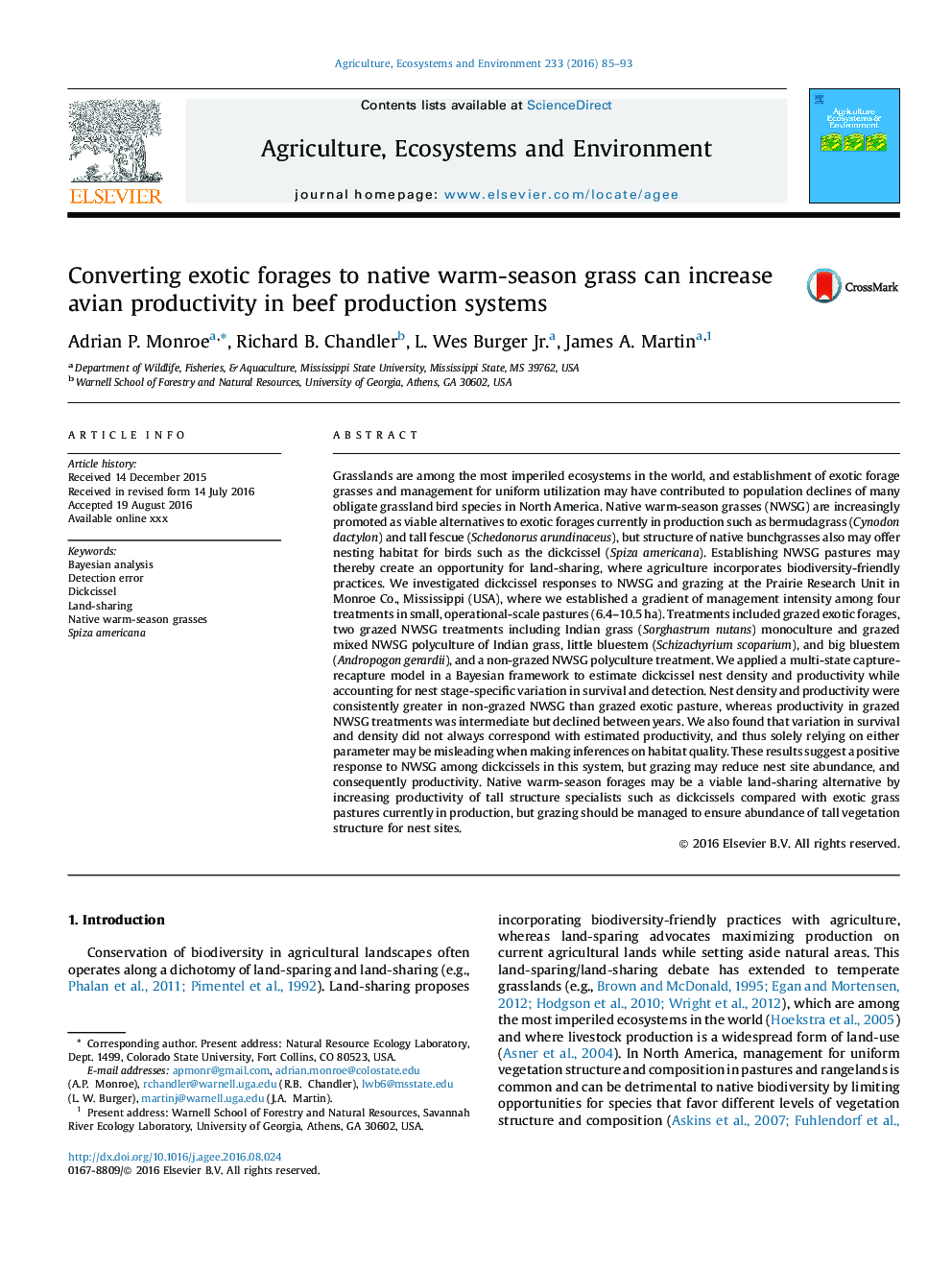| کد مقاله | کد نشریه | سال انتشار | مقاله انگلیسی | نسخه تمام متن |
|---|---|---|---|---|
| 2413472 | 1552019 | 2016 | 9 صفحه PDF | دانلود رایگان |
• We compared dickcissel productivity in native and exotic grass pastures.
• Dickcissels responded positively to tall structure of non-grazed native grasses.
• Productivity was intermediate in grazed native pasture but declined between years.
• Native grasses may be biodiversity-friendly alternatives to exotic forages.
• Grazing can reduce nest site availability for tall structure specialists.
Grasslands are among the most imperiled ecosystems in the world, and establishment of exotic forage grasses and management for uniform utilization may have contributed to population declines of many obligate grassland bird species in North America. Native warm-season grasses (NWSG) are increasingly promoted as viable alternatives to exotic forages currently in production such as bermudagrass (Cynodon dactylon) and tall fescue (Schedonorus arundinaceus), but structure of native bunchgrasses also may offer nesting habitat for birds such as the dickcissel (Spiza americana). Establishing NWSG pastures may thereby create an opportunity for land-sharing, where agriculture incorporates biodiversity-friendly practices. We investigated dickcissel responses to NWSG and grazing at the Prairie Research Unit in Monroe Co., Mississippi (USA), where we established a gradient of management intensity among four treatments in small, operational-scale pastures (6.4–10.5 ha). Treatments included grazed exotic forages, two grazed NWSG treatments including Indian grass (Sorghastrum nutans) monoculture and grazed mixed NWSG polyculture of Indian grass, little bluestem (Schizachyrium scoparium), and big bluestem (Andropogon gerardii), and a non-grazed NWSG polyculture treatment. We applied a multi-state capture-recapture model in a Bayesian framework to estimate dickcissel nest density and productivity while accounting for nest stage-specific variation in survival and detection. Nest density and productivity were consistently greater in non-grazed NWSG than grazed exotic pasture, whereas productivity in grazed NWSG treatments was intermediate but declined between years. We also found that variation in survival and density did not always correspond with estimated productivity, and thus solely relying on either parameter may be misleading when making inferences on habitat quality. These results suggest a positive response to NWSG among dickcissels in this system, but grazing may reduce nest site abundance, and consequently productivity. Native warm-season forages may be a viable land-sharing alternative by increasing productivity of tall structure specialists such as dickcissels compared with exotic grass pastures currently in production, but grazing should be managed to ensure abundance of tall vegetation structure for nest sites.
Journal: Agriculture, Ecosystems & Environment - Volume 233, 3 October 2016, Pages 85–93
